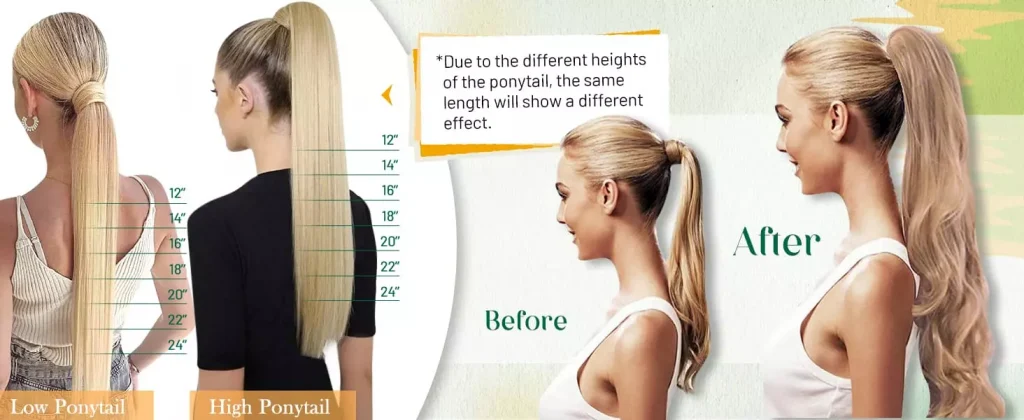Easyouth’s Human Hair Ponytail Extension
Clamp Fixation Issues: The clamp easily slides down due to activity or the weight of the hair.
This may be due to the natural ponytail not being tightly secured, insufficient anti-slip design of the clamp teeth, or too little hair volume. Use a rubber band or small clips to reinforce the base of the ponytail, or add a non-slip silicone pad on the inside.
Why does it feel like there is scalp pressure or a noticeable weight?
This may be due to too little hair volume. If you have very thin hair, it is not recommended to wear human hair ponytail extension, as it may add extra burden to the scalp. Shorten the wearing time, as prolonged use may cause significant discomfort and pain. The position of the clamp is also relevant; adjust the clamp to avoid pressing directly on sensitive scalp areas.
The actual length of the ponytail is longer or shorter than the product specifications.
There may be measurement errors (e.g., not stretching out curly hair properly). If you are unsure about the size selection, refer to our detailed comparison chart for straight and curly hair, as well as high and low ponytails.

Why does the human hair ponytail extension look unnatural?
This may be due to mismatched hair color or texture, or improper installation position. Always choose a human hair ponytail extension that closely matches the color and texture of your natural hair and adjust the installation position based on hair thickness and needs.
Color and Texture Mismatch
If human hair ponytail extension differs from your natural hair in color, shine, or texture, it can be easily noticed, especially under natural light or in photos. For the most seamless blend, choose an extension that matches not only the base color of your hair but also the undertones and finish (e.g., matte vs. glossy). Extensions also come in various textures—straight, wavy, or curly—so be sure to pick one that mirrors your natural hair’s pattern.
Improper Installation Position
Installing the ponytail too high, too low, or at an awkward angle can cause the extension to sit unnaturally or create visible separation from your real hair. The ideal position depends on your hair’s density and style goal. For thinner hair, lower placements often blend better. For a voluminous look, a higher ponytail may work—but only if the extension is securely and subtly attached.
Inadequate Blending
Not brushing or wrapping your natural hair properly around the ponytail base can leave seams visible. Using styling tools, accessories (like a strand wrap or ribbon), or even a light teasing technique can help disguise the attachment point and create a cohesive, natural look.
Hair Condition and Styling
Extensions may also look off if your natural hair is frizzy or unstyled compared to a smooth, polished extension. Lightly styling both your own hair and the extension (e.g., curling or straightening them together) can help them blend seamlessly.
Why does it seem like the hair volume has significantly decreased after a few uses?
Improper washing methods or frequent high-temperature styling can cause damage. Use lukewarm water for washing, avoid rubbing the roots, and comb from the ends upwards gradually. When styling, avoid temperatures above 180°C.
Why does human hair ponytail extension tangle after a period of use?
Lack of regular care can cause real hair strands to become damaged. Additionally, improper storage may be a factor. Hair requires regular deep conditioning. Provide professional care suggestions; after combing straight, hang on a stand to avoid folding or compressing, and store in a cool, dry place away from direct sunlight.
Will human hair ponytail extension damage my natural hair?
If used and cared for properly, human hair ponytail extension will not cause any damage to your natural hair. In fact, using human hair ponytail extension for styling can reduce damage to your own hair.
Can I style human hair ponytail extension?
Yes, you can curl, straighten, or dye human hair ponytail extension. However, please note that the temperature of the heat tool should not exceed 180°C, and dyeing should only be done in darker shades.